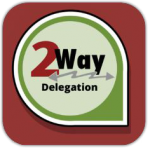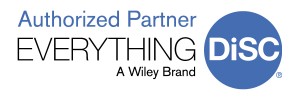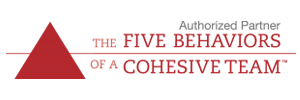Course Description
Conflict is an inevitable dynamic in the work environment. Unfortunately, it usually carries a negative connotation. Conflict, in and of itself, is neither “good” nor “bad”. What makes a conflict situation productive or destructive is the way in which issues and information are analyzed, approached, and communicated. Successful teams and managers have the ability to not only address, but utilize differences in a way that increases the overall strength of the team. This course teaches the skills and perspectives that are necessary to effectively manage conflict.
Most people view conflict as being highly personal in nature. In this course, participants will explore the true definition of conflict, and how this definition can help them better analyze and understand a challenging situation or person. They will also examine the role of personal power and how it influences the level and outcome of a conflict.
Next, participants complete the Thomas-Kilmann Conflict Mode Instrument. Through this instrument, they will gain insight into their preferred mode of conflict management. They will also gain exposure to, and a better understanding of, the preferred approaches of others in a conflict situation. Working in small groups, they will then explore the best approaches to different types of conflicts, and discuss how their preferred approach can be adapted to best manage the situation.
Next, participants will be introduced to the Stop, Yield Go Model for conflict resolution. This is a three-step process that they can use to keep their approach and communication focused and on track so that the conflict is resolved in a productive manner. Participants will identify a conflict situation that they are currently experiencing or anticipate experiencing in the near future. They will then work through the conflict using the three steps. In each step, participants will be engaging in activities and discussions regarding the following topics: assertive language techniques, the power of inquiry and advocacy, and how to effectively manage difficult responses. They will view a video that demonstrates assertive language techniques. Working with a partner, participants will obtain additional feedback and insight into the management of their conflict situation. This will provide participants with a detailed and complete action plan that they can implement immediately.
Objectives
After completing this course, you will be able to:
- Define conflict.
- Recognize the five styles of conflict resolution and how to best adapt your style and approach to a conflict situation.
- Understand your preferred style of conflict resolution.
- Apply the Stop, Yield, Go Model to collaborative conflict resolution.
- Apply techniques to managing emotions during conflict.
- Explain assumptions and their effect on conflict.
- Use active-listening skills to improve the working environment.
- Apply assertive language techniques to express your needs and respect the needs of others.
Duration
This course can be customized to meet a 4-hour or an 8-hour agenda.
Course Outline
Below is the course outline with objectives and timing for an 8-hour agenda.
| Objective and Topic | Timing | Elapsed Timing |
| Welcome and Icebreaker | 5 min | |
| Activity – Card Game | 25 min | 30 min |
| Agenda and Objectives | 10 min | 40 min |
| Objective: Define conflict. | ||
| Define Conflict | 5 min | 45 min |
| Sources of Conflict | 5 min | 50 min |
| Objectives: Recognize the five styles of conflict resolution and how to best adapt your style and approach to a conflict situation. Understand your preferred style of conflict resolution. | ||
| Completing the Thomas/Kilmann Assessment | 20 min | 1 hr, 10 min |
| Break | 15 min | 1 hr, 25 min |
| Interpreting the Thomas-Kilmann Conflict Scores | 45 min | 2 hr, 10 min |
| Break | 10 min | 2 hr, 20 min |
| Objectives: Apply the Stop, Yield, Go Model to collaborative conflict resolution. Apply techniques to managing emotions during conflict. | ||
| Stop, Yield, Go Model | 25 min | 2 hr, 45 min |
| Stop: Hot Buttons | 25 min | 3 hr, 10 min |
| Tomato Activity | 20 min | 3 hr, 30 min |
| Lunch | 1 hr | 4 hr, 30 min |
| Establish Interests, Not Positions | 10 min | 4 hr, 40 min |
| Objective: Explain assumptions and their effect on conflict. | ||
| Fact versus Assumptions | 20 min | 5 hr |
| Application: Stop, Yield, Go Worksheet | 20 min | 5 hr, 20 min |
| Break | 10 min | 5 hr, 30 min |
| Yield | 20 min | 5 hr, 50 min |
| Relate to the Person and the Environment | 20 min | 6 hr, 10 min |
| State Perspectives: Positive Intent | 15 min | 6 hr, 25 min |
| Inquiry | 10 min | 6 hr, 35 min |
| Advocacy | 10 min | 6 hr, 45 min |
| Objective: Use active-listening skills to improve the working environment. | ||
| Listen Carefully and Offer and Ask for Options | 10 min | 6 hr, 55 min |
| Go: Verify Actions to Be Taken and Evaluate the Effectiveness of the Actions | 10 min | 7 hr, 5 min |
| Application: Stop, Yield, Go Worksheet | 20 min | 7 hr, 25 min |
| Break | 10 min | 7 hr, 35 min |
| Objective: Apply assertive language techniques to express your needs and respect the needs of others | ||
| Assertive Communication Techniques | 30 min | 8 hr, 5 min |
| Summary and Action Planning | 25 min | 8 hr, 30 min |


